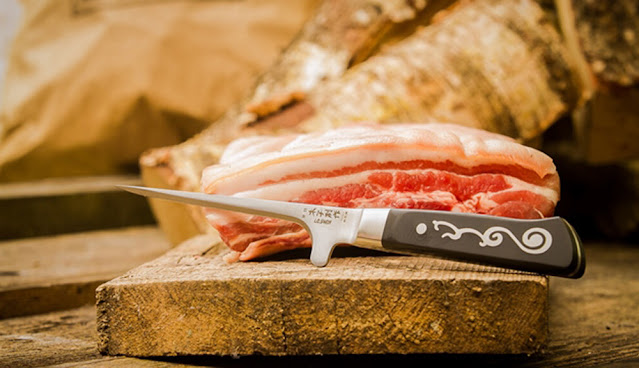Unleash Precision in the Kitchen: The Boning Knife's Secret Weapon
When it comes to the world of culinary craftsmanship, one tool stands out as a true game-changer - the boning knife. This unassuming, slender blade possesses unique attributes that make it an indispensable tool for any serious cook or chef. In this article, we'll dive deep into the world of boning knives, exploring their history, construction, and the unparalleled precision they offer in the kitchen.
Boning Knife Origins
The boning knife has a rich history dating back centuries. Originally, it was crafted for a singular purpose: to separate meat from bone. Its earliest iterations were rudimentary and lacked the precision we see today. However, over time, the boning knife evolved into a versatile instrument capable of handling a wide range of culinary tasks.
Anatomy of a Boning Knife
A boning knife's design is all about finesse and precision. Here are some key features that set it apart:
Blade Shape: The blade of a boning knife is typically slim and curved, allowing for easy maneuverability around bones, joints, and tendons. This curvature ensures that you can make precise cuts without damaging the meat.
Blade Length: Boning knives come in various lengths, usually between 5 to 7 inches. This variability allows you to choose the right size for your specific needs, whether you're working with poultry, fish, or larger cuts of meat.
Blade Material: High-quality boning knives are often made from stainless steel or high-carbon steel. These materials are known for their durability, sharpness, and resistance to corrosion.
Handle Design: The handle of a boning knife is typically designed for a comfortable grip, ensuring that you have full control over the blade's movements. Some handles even incorporate ergonomic features to reduce hand fatigue during extended use.
Versatility in the Kitchen
While the boning knife's name suggests a narrow focus, it's a versatile tool that can tackle a variety of tasks:
Deboning: As the name implies, boning knives excel at removing bones from meat, poultry, and fish. Their precise, narrow blades allow for clean cuts, minimizing waste.
Trimming: Whether you need to trim excess fat or separate connective tissue, a boning knife is your go-to tool. Its sharp edge ensures you remove only what's necessary.
Fileting: When it comes to delicate tasks like fileting fish, the boning knife's flexibility and precision are unbeatable. You can effortlessly separate the flesh from the bones with minimal effort.
Detail Work: The fine tip of a boning knife is perfect for intricate tasks, such as removing skin, silver skin, or membrane from meats.
Caring for Your Boning Knife
To ensure your boning knife remains in top condition, here are some essential care tips:
Hand Wash: Always hand wash your boning knife with mild soap and warm water. Avoid the dishwasher, as harsh detergents and high temperatures can damage the blade and handle.
Dry Immediately: After washing, dry the knife immediately to prevent moisture and rust. Use a clean, soft towel for this purpose.
Store Safely: Invest in a knife block, magnetic strip, or blade guard to store your boning knife safely. Keeping it in a dedicated storage space will protect both the blade and your hands.
Conclusion:
In the world of culinary arts, precision and versatility are invaluable, and the boning knife offers both in abundance. Whether you're a professional chef or a home cook, having a high-quality boning knife in your arsenal can elevate your culinary creations to new heights. With its unique design and ability to handle a wide range of tasks, it's time to give this kitchen workhorse the recognition it deserves.
.jpg)



Comments
Post a Comment